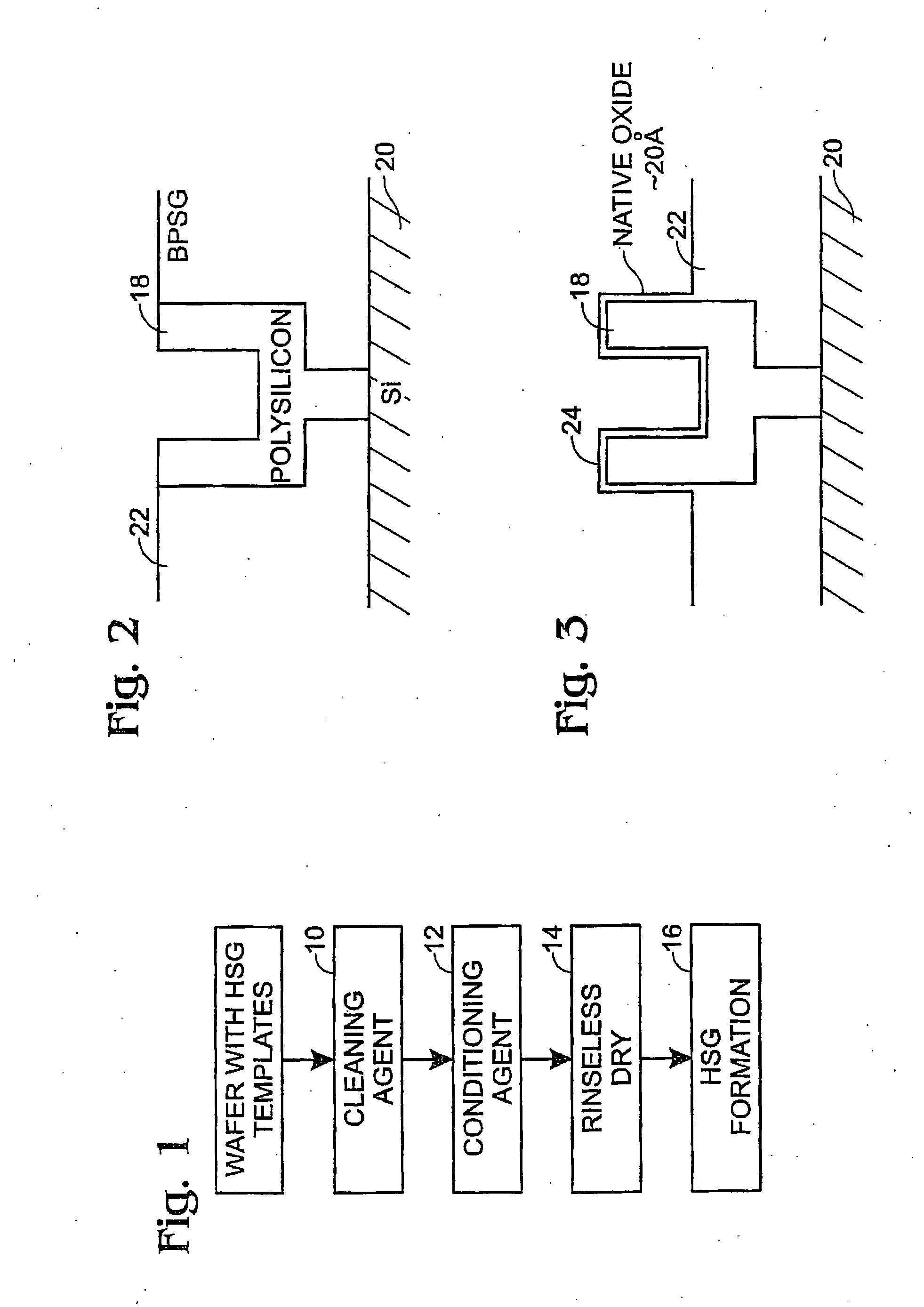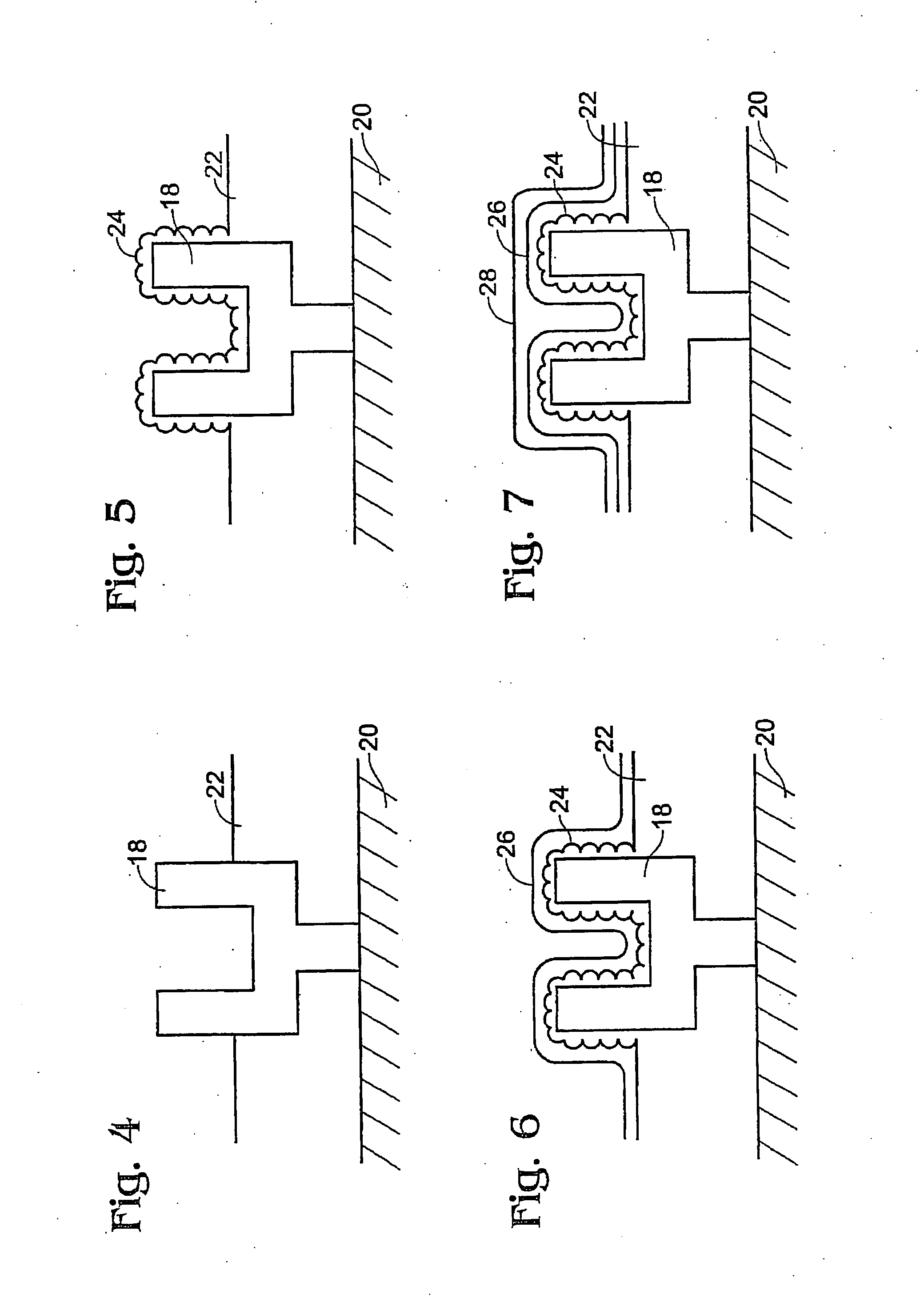Methods of forming hemispherical grained silicon on a template on a semiconductor work object
- Summary
- Abstract
- Description
- Claims
- Application Information
AI Technical Summary
Benefits of technology
Problems solved by technology
Method used
Image
Examples
Embodiment Construction
[0038] The present invention provides a novel method for treating a semiconductor work object so that it is suitable for use in HSG process steps. As used herein, “work object” means wafers (production, dummy, or pmon), die and packaged parts, incorporating, in whole or part, silicon substrates, and other known or discovered semiconductor materials, components, and assemblies, including, for example, silicon-on-insulator (SOI), silicon-on-sapphire (SOS), thin film transistor (TFT) materials, or germanium, periodic group III-IV materials, II-VI materials, hetero-materials (II, III, V, VI), and conductive glasses.
[0039] It will be apparent to persons of skill in the art that the present invention is not necessarily limited to any particular kind of work object. However, to illustrate the principles of the present invention, the following discussion, unless otherwise noted, will be in terms of a silicon-based wafer as the work object.
[0040]FIG. 1 is a flow chart of steps 10-16 that d...
PUM
 Login to View More
Login to View More Abstract
Description
Claims
Application Information
 Login to View More
Login to View More - R&D
- Intellectual Property
- Life Sciences
- Materials
- Tech Scout
- Unparalleled Data Quality
- Higher Quality Content
- 60% Fewer Hallucinations
Browse by: Latest US Patents, China's latest patents, Technical Efficacy Thesaurus, Application Domain, Technology Topic, Popular Technical Reports.
© 2025 PatSnap. All rights reserved.Legal|Privacy policy|Modern Slavery Act Transparency Statement|Sitemap|About US| Contact US: help@patsnap.com



